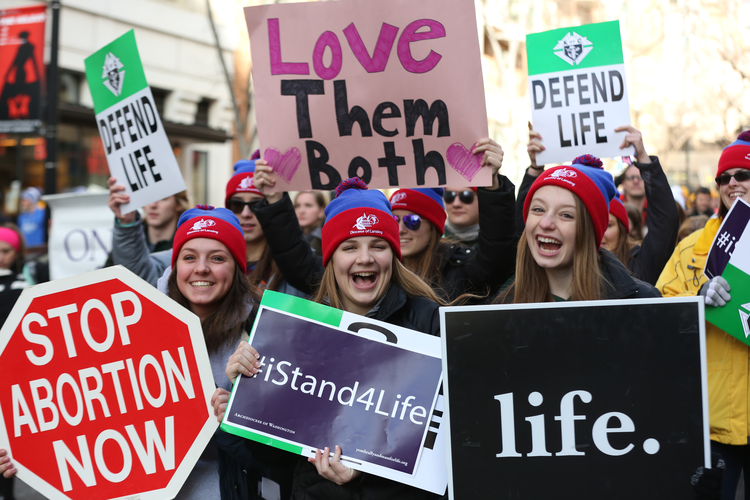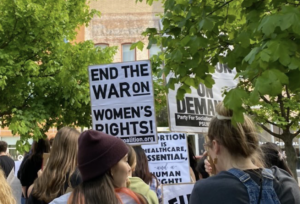Roe has Got to Go
May 20, 2022
Introduction
Roe v. Wade is a Supreme Court case that never should have happened. Seven justices put their heads together and not only pulled two constitutional rights out of thin air, but then told the entire country that they have to go along with their delusion. The right to decide how to handle abortion should have been left up to the states from the start, but before we get there, let’s look at the constitutional and legal reasons behind the decision to scrap Roe.
Reason One: The Constitution
The Supreme Court’s one job is to interpret laws and government actions to be constitutional or unconstitutional. This means that the wording, the interpretation, and the intention of the Constitution all come into play when they take and decide a case. As the branch of government that decides the law of the land, there is a lot of pressure on them to do what is right by the Constitution. Unfortunately, Roe v. Wade violates it.
Justice Samuel Alito, the Supreme Court justice who wrote the draft majority opinion, explains this further.
“The Constitution makes no reference to abortion, and no such right is implicitly protected by any constitutional provision, including the one on which the defenders of Roe and Casey now chiefly rely—the Due Process Clause of the Fourteenth Amendment. That provision has been held to guarantee some rights that are not mentioned in the Constitution, but any such right must be ‘deeply rooted in this Nation’s history and tradition’ and ‘implicit in the concept of ordered liberty,’” Alito explained.
When the justices who decided Roe v. Wade in 1973 looked at the Constitution, they saw what they wanted to see, which was a right to privacy that extended all the way to a woman’s right to an abortion. Before Roe, any extension only included actions done in someone’s own home, and involved at least two living people. Issues like marriage, birth control, and sexual relations were decided using the 14th amendment, and were a basis for Roe to extend privacy to abortion. However, there is a major difference between prior issues and abortion: abortion is meant to end life.
Whether or not you’re pro-life or pro-choice, it cannot be denied that abortion is meant to get rid of an unwanted pregnancy, ie. ending life. Arguments of whether or not this is okay are fine, but what cannot be denied is this scientific fact. Abortion’s nature of ending life makes it uncomparable to things like sexual relations, birth control, and marraige, because none of these things also include termination. Justice Alito reiterates this:
“Roe’s defenders characterize the abortion right as similar to the rights recognized in past decisions involving matters such as intimate sexual relations, contraception, and marriage, but abortion is fundamentally different, as both Roe and Casey acknowledged, because it destroys what those decisions called ‘fetal life’ and what the law now before us describes as an ‘unborn human being,’” he said.
Therefore, based on not only the Constitutional wording and precedent cases, Roe v. Wade was a ruling that did not rely on actual Constitutional law, but rather what the court chose to believe themselves. When justices begin to rule based on their own opinions and views, it begs the question of where does it end.
“A ‘privacy right’ large enough to encompass abortion could also be applied to virtually any conduct performed outside the public view, including child abuse, possession of pornography or using illicit drugs. The liberty interest to be protected from state regulation is never really defined in Roe,” law esquire Susan E. Wells writes in an article investigating the legal backing for Roe v. Wade.
If the Supreme Court could rule on abortion despite the Constitution and their own precedent, what else could they deem a fundamental right?
Reason Two: Legal Authority
The Judicial branch of the United States was created to be pretty powerless. They cannot make or enforce laws, only decide if they are constitutional or not. Even then, they have no power to necessarily enforce their own rulings, nor can they make laws that support them. The Supreme Court is supposed to be made up of justices, not legislators. However, when Roe was decided they became just that.
“The key elements of the Roe framework – trimesters and viability – are not found in the text of the Constitution or in any place else one would expect to find a constitutional principle. … The result has been a web of legal rules that have become increasingly intricate, resembling a code of regulations rather than a body of constitutional doctrine,” Supreme Court justice William Rehnquist stated in the later court decision Webster v. Reproductive Health Services.
Roe v. Wade creates a set of minimum requirements that abortion restrictions have to meet in order to be legal. These requirements are not found in the Constitution, have no Constitutional precedent or backing, and take on the action of a law rather than a judicial ruling. For this reason alone Roe reaches past the boundaries of the Supreme Court, and therefore should be overturned.
Reason Three: Power to the States
Because the Constitution does not include a right to an abortion and because of the moral conflict that is abortion, the states and therefore the people should decide what restrictions should be put into place or taken away. The Supreme Court is not elected by the people, and for good reason. Their decisions are not as easily swayed based on popularity with American citizens because they are not trying to be reelected. Although this works well for Constitutional questions, issues that are controversial and do not have Constitutional backing should be left up to the state legislators.
When Roe was decided, it stripped the power of the American people and state governments regarding abortion away. It did not matter how the people felt in each state; their decision making was limited based on the opinions of a couple justices. This is not how it should be.
“It is time to heed the Constitution and return the issue of abortion to the people’s elected representatives. ‘The permissibility of abortion, and the limitations, upon it, are to be resolved like most important questions in our democracy: by citizens trying to persuade one another and then voting,’” Alito stated in the majority opinion.
The importance of upholding American democracy through state representatives making decisions on moral issues based on their constituents is vital. By overturning Roe v. Wade, our Supreme Court justices have the opportunity to do just that.
Conclusion
Roe v. Wade is a decision that should never have been made. It is an overreach of judicial power, has no Constitutional backing, and should have kept the issue of abortion at the state level. As we wrestle with the conflicting arguments regarding not only Roe v. Wade but also abortion, let’s remember what the Judicial branch was created to do, and also keep in mind that although it may be overturned, the question of abortion is still one that will persist into the future.








